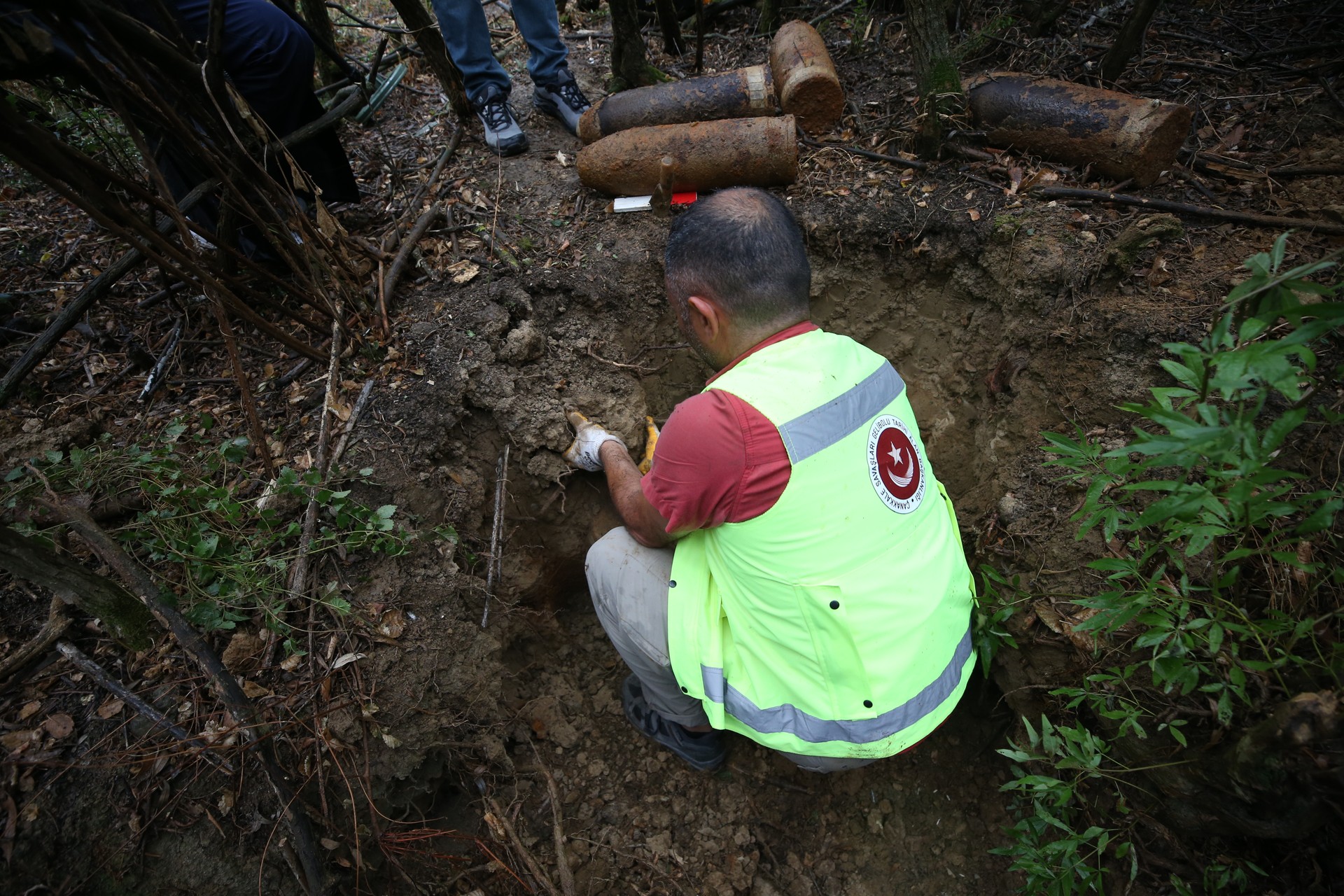
The Canakkale Peninsula in Türkiye’s Canakkale province was the scene of some of the bloodiest battles of World War I, and 109 years later, the remnants of the war in the region remain as fresh as the first day.
However, excavation efforts in this historic area have been criticized for using methods unsuitable for battlefield archaeology.

On September 29, 2023, a video titled "I SEARCHED FOR BULLETS AND WAR AMMUNITION WITH A DETECTOR IN CANAKKALE! (MUST WATCH)" was uploaded to the YouTube channel "Deli mi ne?" owned by Ali Abdusselam Yilmaz. The video quickly garnered over 6.35 million views.
In the video, Yilmaz and his team search for war ammunition on the battlefields of the Canakkale Peninsula, where the Canakkale Wars took place, using thermal and metal detectors.

It is mentioned that the video was made with permission from the Canakkale Wars Gallipoli Historical Site Directorate, and authorized personnel are seen accompanying Yilmaz.

However, the video also highlights Yilmaz and his team's careless excavation methods.
At one point, the archaeologist on duty states, "This is not an archaeological excavation, so we will only conduct a surface dig." Yilmaz is seen forcing artifacts out of the ground, with the archaeologist failing to intervene.

Among the artifacts found are canteens, pistols, and rifles belonging to both Turkish and ANZAC soldiers, and at the end of the video, an unexploded shell is also discovered.
Experts warn that such superficial excavations could cause irreversible damage to historical war remnants.

In one part of the video, while Yilmaz is resting, he openly reveals the camera traps used by Turkish law enforcement to keep treasure hunters and various other threats away.

Exactly a year later, on September 16, 2024, 109-year-old artillery shells from World War I were discovered in a scrubland area near Buyukanafarta village in Eceabat, Canakkale.
The shells were found by a farmer walking his dog, and the site was secured by teams from the Canakkale Wars Gallipoli Historical Site Directorate and the District Gendarmerie Command.
Following the investigation, 18 artillery shells with a diameter of 150 millimeters were identified.

However, this excavation also faced criticism due to the archaeologist on duty disregarding scientific methodology and forcefully removing the unexploded ammunition from the ground, posing a significant safety risk.
The archaeologist’s careless approach to both the historical artifacts and their own safety sparked outrage.

Battlefield archaeology is a discipline that requires expertise in preserving military conflict sites and demands strict adherence to scientific methods. The excavation examples in Canakkale have been conducted contrary to globally recognized archaeological standards. Improper methods of unearthing historical war remnants can inflict irreparable damage on the cultural heritage of the region.
The Battle of Canakkale, one of the most significant conflicts of World War I, remains of great importance to historians and archaeologists. Even 109 years later, the war remnants discovered offer new clues about the brutal realities of war, and it is crucial that these artifacts are preserved carefully and scientifically.

One of the most important factors in their preservation is the initial data collected from the site where the artifact is found.
As with any archaeological excavation, artifacts in these areas should be photographed in situ, with necessary information and coordinates documented, and delivered to the relevant authority or museum along with proper records.